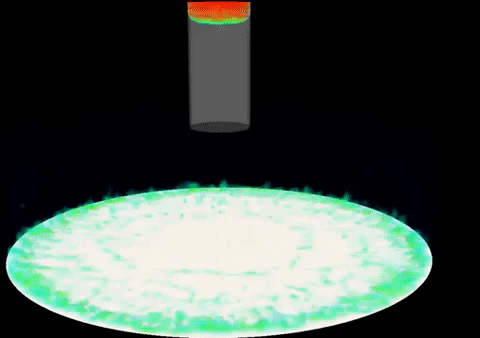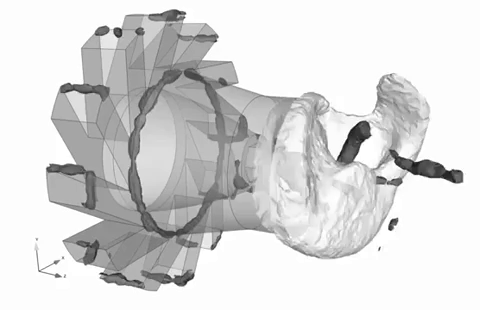eLearning@Cerfacs - Open Online Courses
Tool library
Computational Fluid Dynamics
Computation of adiabatic flame temperature 
The adiabatic flame temperature calculator proposed here uses CANTERA, an object-oriented software toolkit for chemical kinetics, thermodynamics, and transport processes. This calculator is based on GRI-MECH 3.0 (Gregory P. Smith, David M. Golden, Michael Frenklach, Nigel W. Moriarty, Boris Eiteneer, Mikhail Goldenberg, C. Thomas Bowman, Ronald K. Hanson, Soonho Song, William C. Gardiner, Jr., Vitali V. Lissianski, and Zhiwei Q.).
ARCANE 
ARCANE (Analytical Reduction of Chemistry : Automatic, Nice and Efficient) is a chemistry reduction code based on YARC written by Pr. Perrine Pepiot. Its goal is to provide a user friendly reduction tool as well as an interface for Cantera. This tool is developed by CERFACS and Cornell University to generate chemical kinetics mechanisms that are computationally affordable for LES simulations of combustion. It can also be used in any configuration involving chemical kinetics such as steam cracking or bio-chemistry problems.
Soundtube - Acoustic in networks of ducts 
Soundtube 1.5D constitutes a tool for acoustic analysis in 2 or 3-dimensional network of elementary tubes. In each tube, acoustic waves are seen as longitudinal waves in a 1-dimensional approach. Consequently, these geometries can be called ”1.5-dimensional”. This code has been conceived in order to calculate quickly the eigen modes of combustion chambers viewed as ”1.5-dimensional” configurations. It can also provide the shape of the correspondant eigen modes.
1D CFD simulator 
The aim of this tool is to illustrate and introduce readers to the notion of stability, dispersion and dissipation: the ability or inability for a discretization to attenuate oscillations or scramble a nice and continuous signal. This tool is based on a 1D CFD simulator that solves the convection equation.
Signal Processing
Online Fourier analyser 
This is a simple Fourier Analysis. Copy and paste your signal. If two colums are pasted, the first one is interpreted as the time and the second one as the signal. In this case, uncheck the constant time step box.
Spectral analysis 
Spectral analysis is a widely used method coming from the signal processing science. However, misuses and misunderstandings of the method are quite common, to say the least. In addition, most of the signal processing tutorial/books/courses consider the time-dependant signals a particular of the theory, making their material very hard to link with Fluid Dynamics applications.
Non harmonic signals 
This shows how a spectral analysis can be perturbed by non-harmonic components. In this tool, an event is generated each second during N seconds. Fluctuations can be applied on amplitude and on time lags. See how the spectrum becomes biased and non reproducible for short signals (N lower than 10) with strong time lags fluctuation (lag near 0.99).
To go further
- Online training sessions
- Face to face training sessions
- Wide interest mini-seminars
- Training newsletter subscription
- Our YouTube channel

To contact us
Phone: (+33/0) 5 61 19 31 31
E-mail: eLearning@cerfacs.fr

Live Visitor Counter

